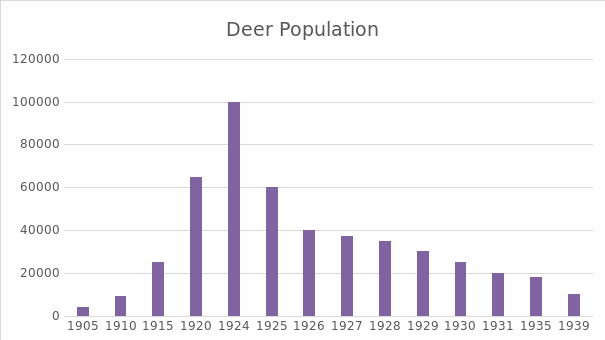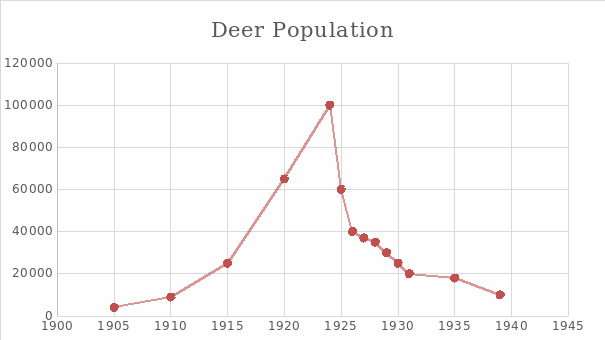The fluctuation of the deer population on Arizona’s Kaibab Plateau from 1905 to 1939 is an excellent example that demonstrates the importance of carrying capacity. This concept refers to the average population size of the species that the geographical area can support (National Geographic, n.d.). In other words, the environment can provide only a limited number of resources, including food and water. The two charts (Fig. 1 and Fig. 2) below demonstrate the fluctuation of the deer population on Arizona’s Kaibab Plateau from 1905 to 1939:


As seen from the charts, the deer population size was gradually recovering until 1920. However, when the herd reached approximately 70,000, it was evident that the geographic area could not support this number of animals, exceeding its carrying capacity. From 1924 to 1926, more than 60,000 deer starved to death. The herd growth since 1907 was possible due to the actions of the Forest Service. They banned deer hunting, which drastically improved the situation; however, their policy on hunting predators made the deer population skyrocket. Namely, hunters killed approximately 10,000 predators of the deer and removed the limiting factor that controlled the population size. As a result, it had a negative impact on the ecosystem, and the deer population grew out of control.
The Forest Service learned the valuable lesson of the importance of protecting both deer and predators to preserve the environment. Moreover, it is crucial to issue hunting permits with care to prevent hunters from killing an exceeding number of deer. Today, the Forest Service carefully manages the deer population on Arizona’s Kaibab Plateau to control the herd size within the range of the area’s carrying capacity. Ultimately, maintaining approximately 20,000-40,000 deer in the area is a good idea to adhere to the principles of carrying capacity and ensure that animals do not starve.
References
National Geographic. (n.d.). Carrying capacity. Web.